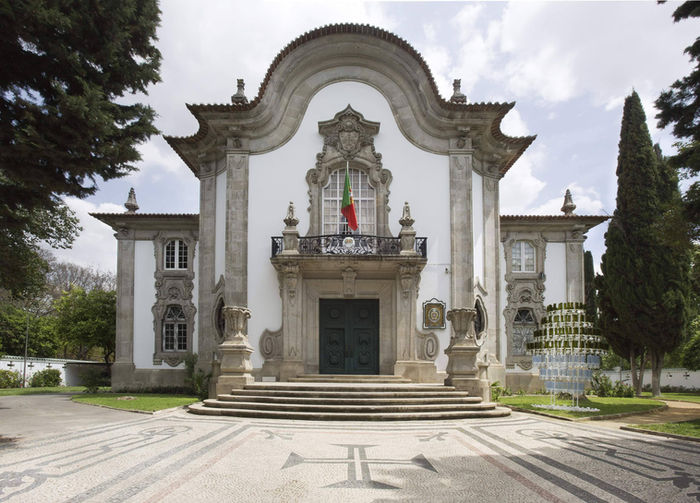SEM RAIA
Arturo Comas
Francisco Correia
Norberto Gil
Quiñones
Tomaz Hipólito
17.10 __ 02.11.2025
Consulate General of Portugal
Seville (ES)
SEM RAIA Iberian Contemporary Art Exhibition
The exhibition's title is a metaphor for the authenticity that brings together the countries that share the Iberian Peninsula, in a cultural and aesthetic dialogue featuring five artists from both nations.
This exhibition, presented in the emblematic building of unequivocal architectural value—the Consulate General of Portugal in Seville—was conceived as a symbolic encounter of contemporary art that freely interacts between both sides of the border. The building itself, which houses the artists' work, originated in the design by architects Carlos and Guilherme Rebelo de Andrade for the Portuguese Pavilion at the 1929 Iberia-American Exposition, and today houses the Portuguese consular services in Seville.
The collection of works presented encompasses not only geography, but also materiality and various artistic disciplines, from painting, sculpture, installation, and even performance. The artists in dialogue conceptualize the cultural diversity that directly and indirectly transforms the meaning of Raia (border in Portuguese) into its phonetic translation in Spanish, Linea. This linguistic, geographic, and identity-based approach is perhaps one of the strongest elements that led to one of the most significant exoduses between the two countries. It also reflects the empathy for difference, which in this exhibition allows us to present the memory and heritage of a shared Iberian territory.
Among the Portuguese and Spanish artists, Sevillian Arturo Comas—represented in Portugal by Galeria NAVE since 2022—has been developing a series of works on the most symbolic outdoor chair in Portugal. The "Gonçalo" chair (named after its master craftsman, Gonçalo Rodrigues dos Santos), which is still produced in the original ARCALO factory in Cartaxo and exported to the rest of Europe and other continents. Comas develops a series of sculptural pieces that subvert the functionality of the object (the chair) through a play between verisimilitude and uselessness.
Francisco Correia, the youngest artist in the exhibition, was born in Lisbon and earned his master's degree in Brussels, where he settled to work after receiving several scholarships and awards from Belgian institutions. When traveling between the two countries of the Iberian Peninsula, the vehicle is essential, as are the time, the starting point, and the destination. Correia leaves no doubt about these conditions when he transports us on an imaginary journey along an immeasurable and borderless path.
The sculptor Quiñones learned from the great masters the legacy of working with stone, the raw material that nature offers us, and with his unique mastery, he transports us to memories, tastes, and smells of our childhood, recognizable to any Portuguese or Spanish child. Quiñones creates a monument to a time of year when the two countries, which share mountains and hills, freshwater, beaches, and ocean coasts, are filled with families seeking sun, nature, and sea breezes, enjoying a way of experiencing the outdoors so characteristic of both cultures.
Sevillian Norberto Gil presents paintings that depict the repeated journey back and forth. Gil transcends the limits of the canvas, folding it in on itself, achieving a structure, an architecture, and a volume that rescues it from the two-dimensionality where the line (the Spanish phonetic for raia) does not exist, because this human gesture is impossible to be tattooed on the morphology of a territory, ours.
Tomaz Hipólito is an international Portuguese artist who reminds us of the vastness of our territory and its transformation, identifying it through his unique landscapes. Perhaps because they are unrepeatable—despite all the promotional support—Hipólito, in a video projection and a pictorial performance filled with gestures and movement, aiming to create a new and intermittent place, situates the audience between subjectivity and the experience that takes place in an open field without specific coordinates. Like gestures and works of art, cultural identities are unique, even despite our affinity, empathy, and Iberian fraternity.
Mercedes Cerón, october 2025














